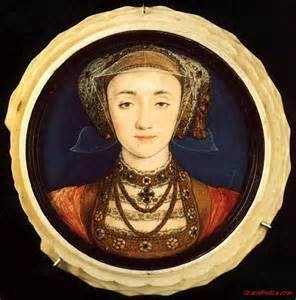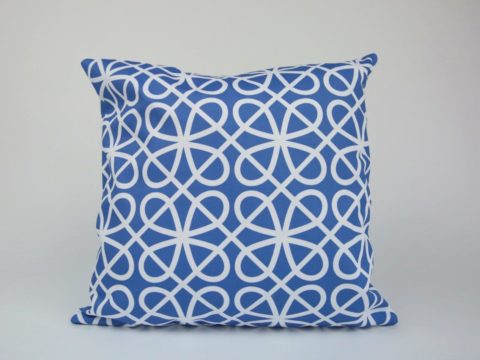The Influence of Henry VIII's Wives on Tudor Fashion Ideals
Chapter 5 : Anne of Cleves

Soon after the death of Jane Seymour, Henry’s ministers began negotiating with foreign leaders to find a suitable bride amongst the European royalty, culminating in the arrival of Anne of Cleves in England in December 1539.
Another young European noble woman Henry VIII considered for his bride was Christina of Denmark. She was a reputedly beautiful widow, and Henry sent Holbein to paint her likeness, as well as the likenesses of the two sisters of the Duke of Cleves, Anne and Amalia.
John Hutton wrote in 1537 to Wriothesley “she is not so pure white as the late Queen, whose soul God pardon, but she hath a singular good countenance and when she chanceth to smile there appeareth two pittes in her cheeks and one in her chin, which becometh her right excellently well.”
The Holbein portrait of Christina hangs today in the National Portrait Gallery. In it, a young woman stands in “a long fur lined loose gown with a stand collar, worn over a black kirtle, drawn in with a silk girdle tied at the waist. Her white linen chemise is decorated with a small frill which shows at the neck of her kirtle, edged with black silk (Hayward).” Henry was infatuated, and kept her portrait until his death, even after it became clear that the match would never take place. It is said that Christina was deeply opposed to marrying Henry, and said, “If I had two heads, one should be at the King of England’s disposal.” The duchess’ disinterest seems apparent in her portrait, which likely only added to its appeal for Henry. In this masterpiece, we see a young woman with nothing to prove. She is confident, unimpressed and aloof.
Anne of Cleves, however, was more amenable to the match. Holbein chose to paint her from the front, which was unusual. It seems that this was the most flattering angle for Anne. Henry later accused Holbein and his diplomats of trying to convince the king to marry Anne. However, the portrait of Christine was also painted from the front. Perhaps Holbein was attempting to give King Henry the best view of his potential brides’ features. Holbein also was never punished, so it seems Henry must not have been terribly angry with him.
By the time Anne arrived in England, Henry was so desperate to meet his new queen, that he travelled unannounced to Rochester where Anne was resting for a few days. There, disguised as a commoner, he surprised Anne and tried to kiss her. Unaware that he was the king, Anne was disgusted and no doubt frightened. She demanded he desist and leave. This was not the reaction the king expected. It seems that this foreign bride was the first person to break down Henry’s “fourth wall.” Anne didn’t treat him as a king, but as a normal person who was rude and inconsiderate. But, instead of learning from this reaction and improving himself, Henry chose to believe the fault was with Anne. After this encounter, Henry could not countenance Anne as his wife. It seems that after she swept away the veil of kingship and saw him as a normal man, he could not be attracted to her.
History remembers Anne of Cleves as “the ugly one,” but it’s unlikely this is true. More likely, they had a bad “first date,” she arrived wearing unflattering fashions and Henry simply was not attracted to her. Also, she was not accomplished in the ways Henry admired, such as the ability to speak multiple languages and play music. Also, Mikhaila notes “the Flemish fashion she’s wearing in the portrait makes her appear to have a large bosom. Henry had referred to Anne Boleyn’s ‘pretty little duckies,’ which seems to have been his preference.”
The French ambassador wrote “she was clothed in the fashion of the country from which she came,” and “she looks about 30 years of age, tall and thin, of medium beauty, and of very assured and resolute countenance.” he said her women were, “dressed so heavily and unbecomingly that they would be thought ugly even if they were beautiful.”
For her wedding to Henry, the chronicler Hall writes, Anne “was apparelled in a gowne of ryche cloth of gold set full of large flowers of great & Orient Perle, made after the Duytche fashion rownde, her here haangyng downe, whych was fayre, yellow and long.” But after her wedding, Anne quickly adopted English fashions. On the following Sunday, Hall wrote “she was appareiled after the English fashion, with a Frenche whode, which so set furth her beautie and good visage, that euery creature reioysed to behold her.”
Soon after their marriage, Henry demanded his ministers find a way to annul it. His ministers found Anne had been previously betrothed, and declared the marriage to Henry VIII invalid. Anne ultimately agreed to this, and the divorce was completed, after six months of marriage, on 9 July,1540. Anne would continue to live in England with a generous income, several homes, including Hever Castle, and the status of the King’s “most beloved sister.” After her divorce, the French ambassador said Anne was “as joyous as ever, and wears new dresses every day.”
